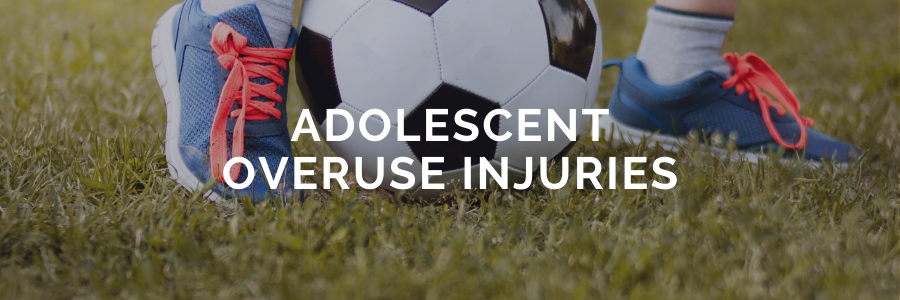Adolescent Overuse Injuries

With the return of the sporting seasons, it’s important to keep an eye on our young ones. These days with the combination of school sport and club sport (often with multiple sporting codes), kids can start to run into an array of different problems.
Unfortunately, adolescent overuse conditions like Patellar Femoral Pain Syndrome (PFPS), Osgood Schlatter’s, and Severs Disease can develop. These conditions usually occur following increased bouts of exercise or repeated high exposure to training loads.
These conditions tend to cause pain around or below the knee and the heel of the foot respectively.
We think that these issues might be related to abnormal musculoskeletal growth changes, lower limb tightness and weaknesses, changes in biomechanics, and high training loads.
The good news is these can be easily treated by your Physiotherapist, Exercise Physiologist or Podiatrist.
Treatment is usually aimed around:
- Addressing loading/ Training errors: Sometimes too much too soon runs the risk of aggravating these issues.
- Implementing exercises to address any weakness, restrictions in range of motion or control.
- Advice and education.
- Hands-on treatment to help reduce symptoms, improve range of motion.
- Taping, orthotics
Prevention is always the best cure- try and implement the following tips to reduce the risk of these injuries occurring:
Load management: Easing into a new season or training program can prevent overload. Doubling up on big training sessions back to back and not allowing your body to recover is a risk factor for overload, resulting in injuries.
Prehab- Warm-up/ Warm down: Spending 10-15 mins pre-training/ games starting with mobility and slowly building higher intensity drills, leading to sports-specific drills, has been shown to reduce injury risk and improve performance.
Warm down following training and games is a nice way to reduce your heart rate, cool tissue, and work on maintaining joint and muscle mobility. You can also combine with a gentle stretch for 3-5 minutes.
Strength and Range of Motion: Maintaining joint range of motion and muscular strength can be a great wait to reduce the risk of overuse injuries. The idea is that you improve your strength enough that you are able to tolerate and deal with the stressors or loads placed on your body.
Consulting your physio or exercise physiologist is a great way to develop a program you can implement into your training routine.
Rest or Relative Rest: Rest periods, plenty of sleep, and good nutrition are good ways to make sure your body has recovered and ready to exercise again.
Rest or Relative Rest (performing another lighter task/ exercise) is important for tissue recovery and adaptation to occur to muscles and tendons. 1-2 days between higher intensity exercises can be enough.
Still having problems?
If you have tried some of the above tips and advice and your child is still dealing with symptoms, it would a good idea to consult your allied health specialist to formulate a specific management plan. It is important to not make your child exercise through pain.
Written by Physiotherapist Jacob Payne
Jacob graduated from Griffith University in 2016 with a Masters of Physiotherapy following a Bachelors Degree in Exercise and Sports Science in 2014.
He has spent the majority of his career working in private practice and sports physiotherapy, developing particular interests in musculoskeletal, post-operative and neurological rehabilitation. Jacob is highly motivated to help each patient reach their desired goals.
Jacob is available for home visits and telehealth consultations.
